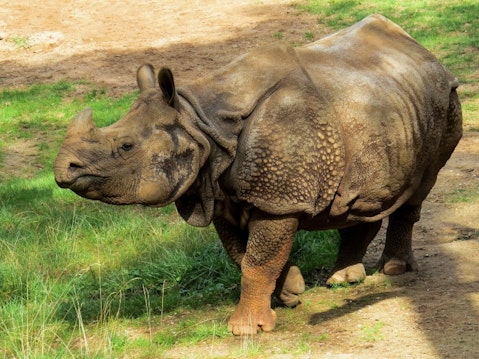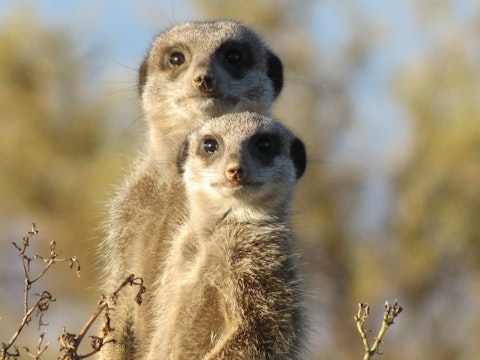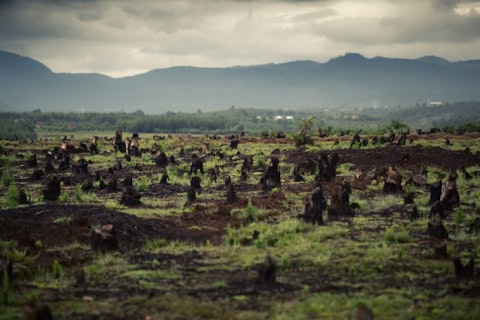What are the major threats to biodiversity and ecosystem today? Before answering this question, let’s take a look at figures showing the current state of biodiversity.
Biodiversity is a term that encompasses all forms of life on Earth – from microorganisms that can’t be seen with the naked eye to large mammals. Every year scientists discover 13000 new species, and so far they have identified 1.7 million species. However, the number of animals and plants living on Earth is much greater and some scientists even claim that 100 million species inhabit the planet. This natural richness has been jeopardized for some time.World Wildlife Foundation’s Living Planet Report from 2014 shows that biodiversity has declined by 52 percent from 1970 to 2010. Since scientists can’t agree on an exact number of species living on Earth, it is hard to determine how many animals and plants go extinct every year – some scientists believe that between 200 and 2,000 species die off annually, while others claim that up to 100 000 species are wiped off.

Pixeljoy/Shutterstock.com
Species usually don’t die off on their own but because of people’s activities that disturb natural order in ecosystems. For some time now people have been overexploiting the planet, using more resources than nature can replenish. It seems that we need 1.5 Earths to satisfy our demands, and a couple of years ago WWF Living Planet warned that the “world is heading for an ecological credit crunch”. The Living Planet Report shows that low-income countries face the highest decline in biodiversity – 58 percent. However, developed countries such as Sweden and Finland also have high deforestation rate as you can see in our list of 10 Countries with the Highest Deforestation Rates in the World.
When we talk about biodiversity, we should bear in mind that everything that lives on Earth is interconnected in such a way that slightest change on one part of the planet affects the life on the other side. As we look into 8 Major Threats to Biodiversity and Ecosystem, we see many examples that depict this global inter-connectivity.
8. Diseases
According to the article Evidence for the Role of Infectious Disease in Species Extinction and Endangerment, infectious disease are contributing factor in less than 4 percents of species that went extinct since 1500 and less than 8 percent of endangered species. Establishing direct correlation between extinction and disease isn’t an easy task and extinction events are usually explained as a result of multiple factors. Recently, scientists have concluded that Darwin’s frogs have died off because of habitat loss and disease known as chytridiomycosis. The disease is caused by Chytrid Fungus which infects 6,000 species worldwide, and which is a global killer of amphibians. Another recently discovered deadly disease is White-nose Syndrome, which have killed 5.5 million North America bats. Among aquatic animals, Whirling disease is one of the most known. It affects salmonid fish, causing the damage to nerves and cartilage, which is why fish swim in a tail-chasing or whirling motion.

7. Wars
The study Warfare in Biodiversity Hotspots showed that over 90 percent of the major armed conflicts between 1950 and 2000 occurred within countries containing biodiversity hotspots (areas that are a reservoir of species that are endangered), and more than 80 percent took place directly within hotspot areas. Modern chemical, biological, and nuclear weapons represent a real danger for biodiversity. For instance, During the Vietnam War, toxic Agent Orange destroyed 14 percent of forest and half of coastal mangroves in Vietnam. Another threat to biodiversity during wartime are local fighters that hunt animals for food and entertainment. During Second Congo War, which began in 1998, the hippo population was reduced by 95 percent, from 29,000 in the mid-1970s hippo population dropped down to 800 or 900. Finally, wars leave thousands and millions people displaced. Refugees must hunt, gather firewood, or build homes to survive. According to the same (Warefare in Biodiversity Hotspots) study – “During the civil war in Rwanda in the mid-1990s, over 2 million refugees fled to neighboring countries, and the demand for fuelwood led to the deforestation of more than 300 km2 of land in Virunga National Park”.

6. Pollution
Increased pollution on the planet has many negative effects on biodiversity. First, destruction of the ozone layer and increased UV radiation reduce the rate of photosynthesis, which in turn influence plants’ growth and survival. Secondly, acid rains, which contain nitric and sulfuric acid, contaminate waters. Normal pH values in lakes and streams range from 6 to 8. Acid rain decreases pH values and organisms that are acid sensitive, especially young ones, suffer. Thirdly, nutrient pollution, a process in which nitrogen and phosphorus contaminate water and act as fertilizer, causes excessive growth of algae. The increase in algae population depletes the water of oxygen which in turn causes the death of large numbers of fish. Annually, the fishing industry loses tens of millions dollars because of nutrient pollution.

5. Illegal hunting and wildlife trade
Illegal Wildlife Trade, which is worth hundreds of millions of dollars, is third largest illegal business (first and second are drug and weapon trade). Illegal hunting has brought many species near the verge of extinction and the most recent example is northern white rhino.
Earlier this year, media were flooded with pictures of four remaining northern white rhinos alive, which are protected by armed men. In the 1960s population of northern white rhinos was around 2.000, but it was reduced to four because of illegal hunting. Biologist made enormous efforts to save the animal from the extinction but as things stand now, their future is bleak. Unlike northern white rhinos, the population of southern white rhinos has been successfully protected, but in recent years illegal hunting has once again jeopardized the survival of the species.
Rhinos are targeted by poachers because one kilo of their horns reaches price of $60.000 on the illegal market. In Asian cultures, there is widespread belief that rhino horns can cure every disease – from cold to cancer. Additionally, rhino horns are perceived as a status symbol. Different sorts of efforts, from raising awareness among locals about the importance of preserving rhino population to strict laws against illegal trade, have been made, but they didn’t bring desired effects.

4. Overexploitation
Overexploitation is fourth on our list 8 major threats to biodiversity and ecosystem. Overexploitation means that people are harvesting natural resources at a faster rate than they can reproduce. While humans have been relying on wildlife as a source of food and clothing for thousands of years, growth of world population, as well as introduction of modern means of capture have brought some species to the verge of extinction.
The case of bluefin tuna is paradigmatic one. The tuna is very popular in Japan where it is used for sushi. In 2013, reports showed that population of this marine predator went down for 96 percent, and, even more disturbingly, that 90 percent of caught bluefin tuna are juveniles that didn’t get the chance to reproduce. Since bluefin tuna is a predator, a decline of its population has caused the increase in the population of prey species such as sardines, and thus disturbed the whole marine ecosystem.
In order to protect species from going extinct, national and international laws that prohibit overhunting and overfishing have been introduced. However, their implementation is still inadequate and many animals get on the list of endangered species due to overhunting.

Ugo Montaldo/Shutterstock.com
3. Climate changes
Due to greenhouse effect it is expected that by 2100 temperature will rise by 6 degrees Celsius. Among many things, global warming has caused ice thickening and melting on Arctic, which is a natural habitat for a wide range of species (polar bears, penguins, puffins). Temperature increase, coupled with ice melting, also leads to the rise of the sea levels. With sea level increase of 3.1 mm per year, the planet will face flooding and other calamities which will endanger the survival of many species – especially those inhabiting oceans and coastlines. In the future world will also face droughts and heat waves, and it is very unlikely that all species will successfully adapt to such rapid change. As a matter of fact, it is estimated that climate change will threaten with extinction one-quarter or more of all species by 2050.
However, we don’t have to wait until 2050 to see devastating effects of global warming – example of coral bleaching illustrates how temperatures rise can affect species. Coral survival depends on algae that live in their tissues. These algae provide food to coral. When sea temperature rises, coral become stressed out and they eject algae which is why they turn white. Without algae, coral die and this has a cascade effect on the entire ecosystem since coral shelter is 25 percent of marine species.

2. Introduction of non-native species
According to some estimates, “introduced species are a greater threat to native biodiversity than pollution, harvest, and disease combined.” Moreover, the establishment of alien species creates significant economic costs. In the USA, 137 billion dollars is lost per year due to damage that invasive species cause in agriculture, forestry and fisheries.
People have been introducing non-native species to new habitats without causing serious problems for thousands of years. Consider only flowers and trees that we plant in our gardens. However, in some cases the introduction of alien species can seriously harm ecosystems. For instance, in 1940s North American beavers were brought to Argentina to start development of fur industry. The animal, whose population has reached 100.000, destroyed 40 million acres of forest. Other examples show that invasive species take away natural resources from native animals. Zebra mussel that was accidentally brought from Russia into the USA, and whose population has rapidly increased, have almost destroyed the population of native mussels in Great Lakes.
Sometimes, species are brought to new habitat to serve as a natural predator. For instance, mongooses were introduced to island Mljet to destroy snakes. Since there are no animals that feed on mongooses on Mljet, mongoose population went up, disturbing islands ecosystem and causing problems to locals. Finally, cross breeding between alien and native species lead to the extinction of domestic species because their gene pools change to become those of alien species.

1. Habitat destruction
The first place on the list 8 major threats to biodiversity and ecosystem occupies habitat destruction. Around 85 percent of all endangered species are near extinction because they lost their natural habitat. While first association when someone mentions habitat destruction is deforestation, one shouldn’t forget about wetlands filling or river draining, activities that also affect biodiversity.
World Wildlife estimates that “some 46-58 thousand square miles of forest are lost each year—equivalent to 36 football fields every minute.” Cutting down of rainforests, which are inhabited by half of all species and which have been reduced by 17 percent in last 50 years, has tremendous consequences. Deforestation leaves species without their natural habitat and food resources, and forces animals to change their migration routes. It also plays an important role in growing climate changes. Trees are our first line of defense from carbon dioxide – they absorb the gas and prevent it from going into the atmosphere which is why one-quarter of all greenhouse gas emissions is the result of deforestation.
Filling of wetlands has similar consequences as deforestation. Wetlands are one of the most diverse ecosystems and they also decrease of pollution. Additionally, wetlands are often compared to “giant sponges, which store, and then slowly release ground water, melted snow, and floodwater, thus preventing floods and erosions”.

Dudarev Mikhail/Shutterstock.com





